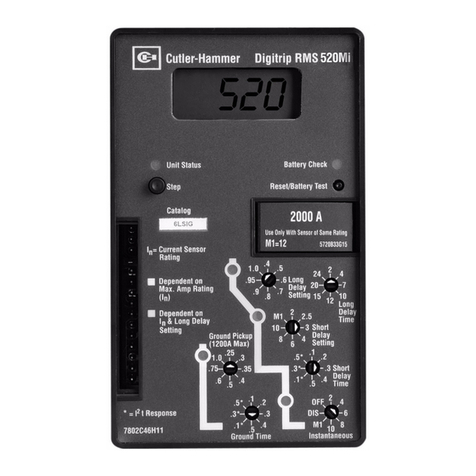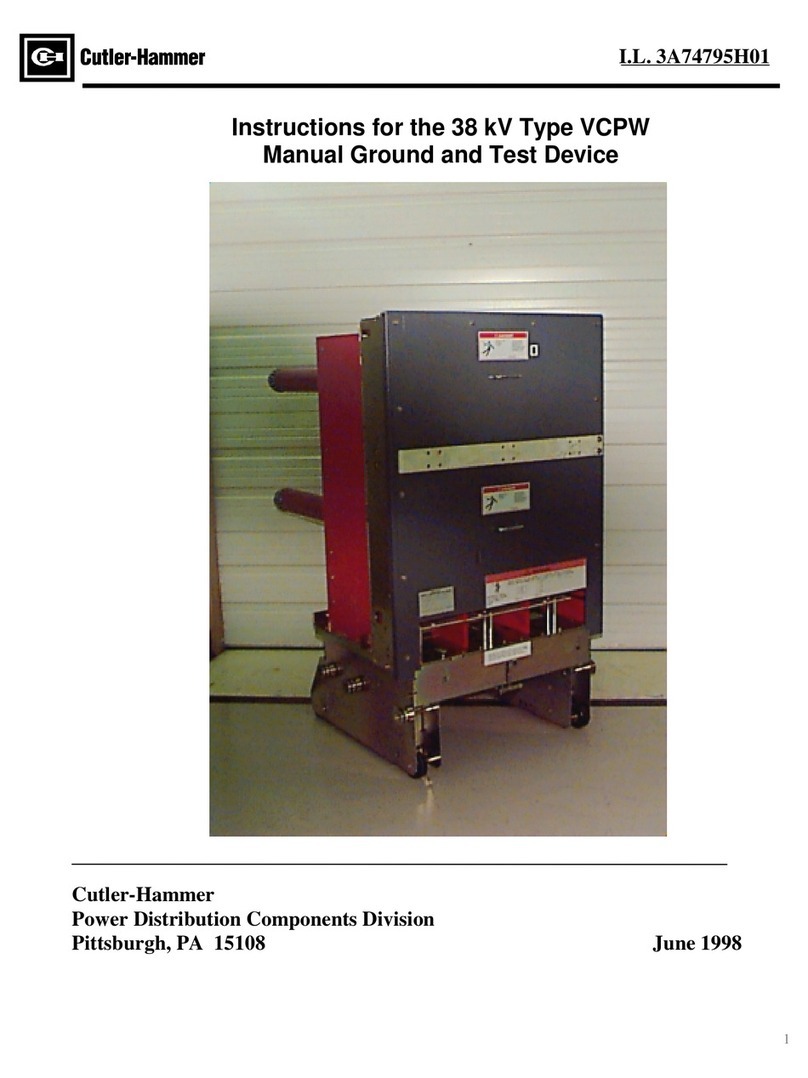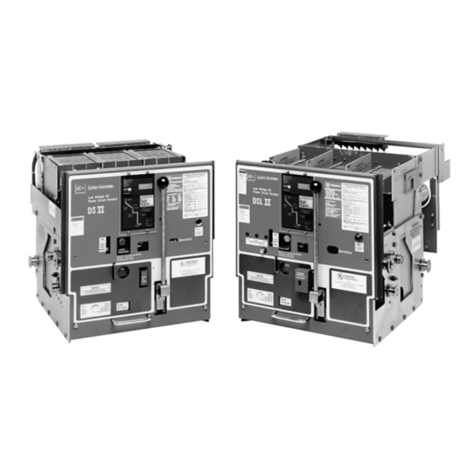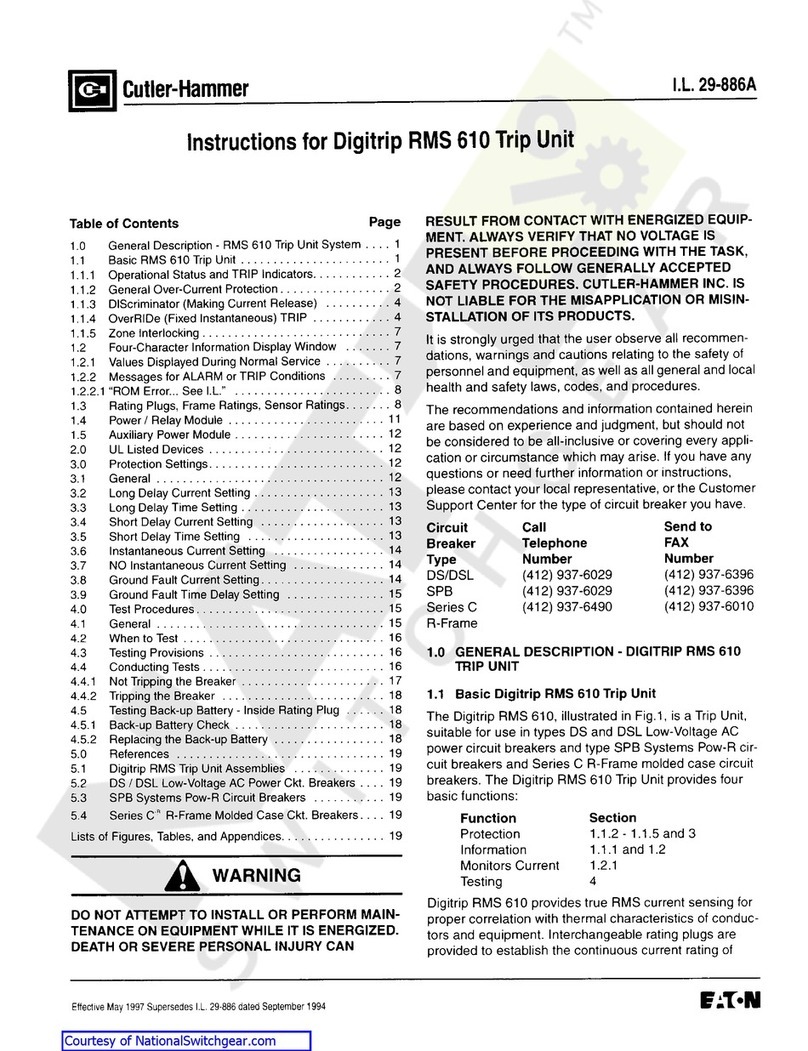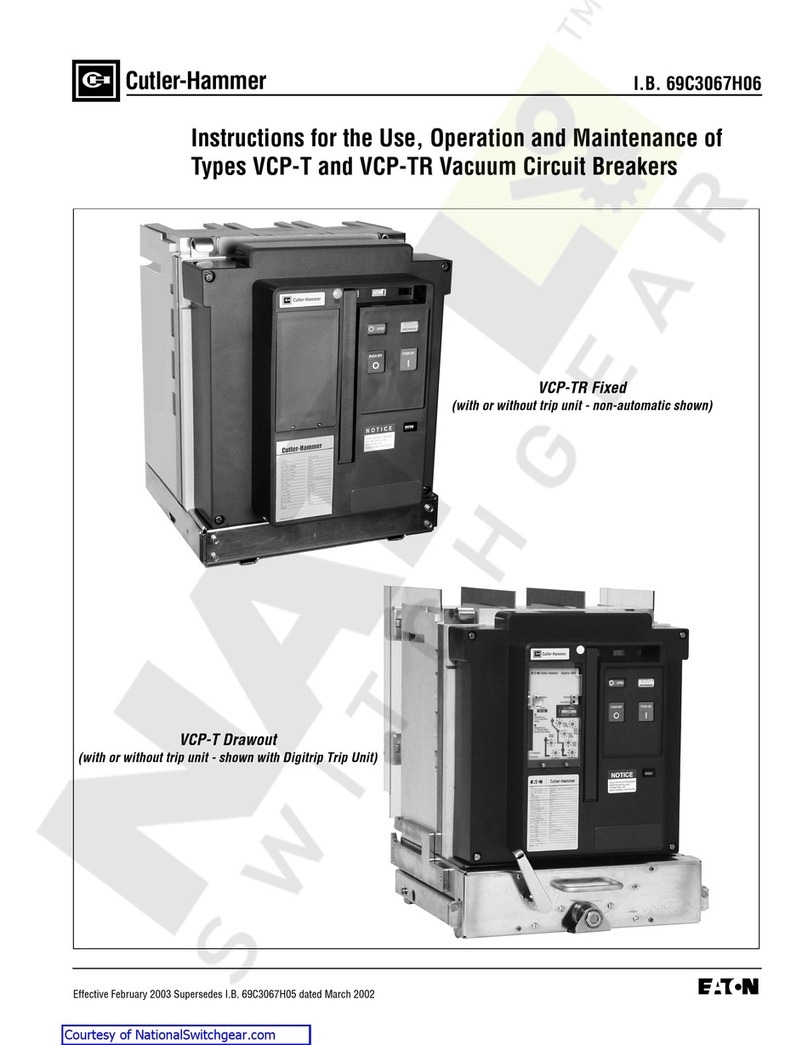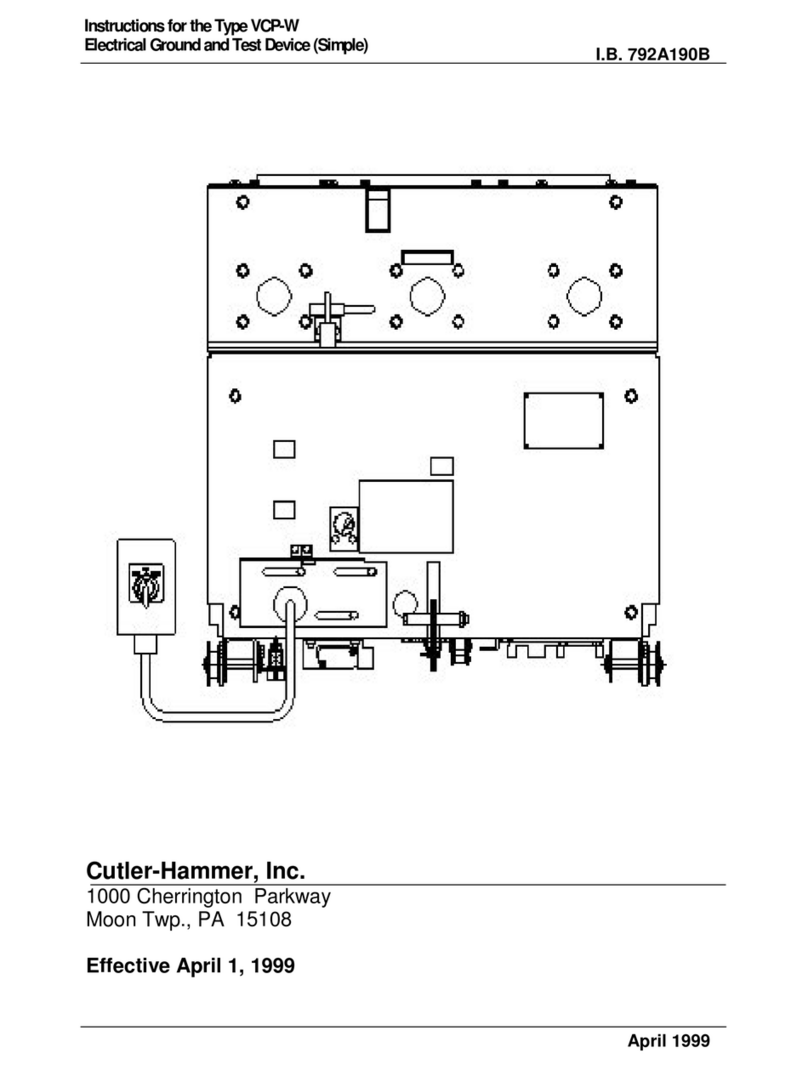
CUTLER-HAMMER 24kV Type W-VAC Circuit Breaker
Effective 12/98 Page 1of 47
SECTION 1: INTRODUCTION
1-1 PRELIMINARY COMMENTS AND SAFETY
PRECAUTIONS
This technical document is intended to cover most
aspects associated with the installation, application,
operation and maintenance of the W-VAC Vacuum
Circuit Breakers. It is provided as a guide for
authorized and qualified personnel only. Please refer
to the specific WARNING and CAUTION in Section 1-
1.2 before proceeding. If further information is
required by the purchaser regarding a particular
installation, application or maintenance activity, a
Cutler-Hammer representative should be contacted.
1-1.1 WARRANTY AND LIABILITY INFORMATION
NO WARRANTIES, EXPRESSED OR IMPLIED,
INCLUDING WARRANTIES OF FITNESS FOR A
PARTICULAR PURPOSE OF MERCHANTABILITY,
OR WARRANTIES ARISING FROM COURSE OF
DEALING OR USAGE OF TRADE, ARE MADE
REGARDING THE INFORMATION,
RECOMMENDATIONS AND DESCRIPTIONS
CONTAINED HEREIN. In no event will Cutler-
Hammer be responsible to the purchaser or user in
contract, in tort (including negligence), strict liability or
otherwise for any special, indirect, incidental or
consequential damage or loss of use of equipment,
plant or power system, cost of capital, loss of power,
additional expenses in the use of existing power
facilities, or claims against the purchaser or user by
its customers resulting from the use of information
and descriptions contained herein.
1-1.2 SAFETY PRECAUTIONS
All safety codes, safety standards and/or regulations
must be strictly observed in the installation, operation
and maintenance of this device.
WARNING
THE WARNINGS AND CAUTIONS INCLUDED AS
PART OF THE PROCEDURAL STEPS IN THIS
DOCUMENT ARE FOR PERSONEL SAFETY AND
PROTECTION OF EQUIPMENT FROM DAMAGE.
AN EXAMPLE OF A TYPICAL WARNING LABEL
HEADING IS SHOWN ABOVE IN REVERSE TYPE
TO FAMILIARIZE PERSONNEL WITH THE STYLE
OF PRESENTATION. THIS WILL HELP TO
ENSURE THAT PERSONNEL ARE ALERT TO
WARNINGS, WHICH MAY APPEAR THROUGHOUT
THE DOCUMENT. IN ADDITION, CAUTIONS ARE
ALL UPPERCASE AND BOLDFACE AS SHOWN
BELOW.
CAUTION
COMPLETELY READ AND UNDERSTAND THE
MATERIAL PRESENTED IN THIS DOCUMENT
BEFORE ATTEMPTING INSTALLATION,
OPERATION OR APPLICATION OF THE
EQUIPMENT. IN ADDITION, ONLY QUALIFIED
PERSONS SHOULD BE PERMITTED TO
PERFORM ANY WORK ASSOCIATED WITH THE
EQUIPMENT. ANY WIRING INSTRUCTIONS
PRESENTED IN THIS DOCUMENT MUST BE
FOLLOWED PRECISELY. FAILURE TO DO SO
COULD CAUSE PERMANENT EQUIPMENT
DAMAGE.
1-2 GENERAL INFORMATION
The purpose of this book is to provide instructions for
unpacking, storage, use, operation and maintenance
of 24kVType W-VAC Vacuum Circuit Breakers. They
are horizontal draw-out, mid-mount removable
interrupting elements ideal for use in new metal-clad
switchgear, as well as for modernization and life
extension of existing switchgear. Designed to IEC
Standards for reliable performance, ease of handling,
and simplified maintenance, 24kVType W-VAC
Vacuum Circuit Breakers provide reliable control and
protection for electrical equipment and circuits. In
addition, these technologically advanced circuit
breakers provide higher insulation levels in less
space, thus reducing the overall switchgear size.
WARNING
SATISFACTORY PERFORMANCE OF THESE
CIRCUIT BREAKERS IS CONTINGENT UPON
PROPER APPLICATION, CORRECT
INSTALLATION AND ADEQUATE MAINTENANCE.
THIS INSTRUCTION BOOK MUST BE CAREFULLY
READ AND FOLLOWED IN ORDER TO OBTAIN
OPTIMUM PERFORMANCE FOR LONG USEFUL
LIFE OF THE CIRCUIT BREAKERS.
!
!

